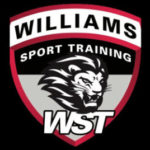For many years the pre practice or game warm-up led by coaches consisted of a few laps ran around the field followed by static stretches, generally in a circle around the center of the field. But, as science has developed over time, so has the understanding of what exercises are helpful and which are in fact harmful.
Static stretches are designed to hold a joint or muscle in a position that is minimally challenging. The focus is on relaxing the body part being stretched and letting it go father on its own. Research suggests that holding a stretch for 30-60 seconds will increase flexibility in the tissue. However, doing this prior to activity may actually inhibit the muscle’s ability to fire, which is not what an athlete wants.
Sports research has shown that stretching is detrimental before a sport due to the following:
1. It reduces peak force by about five percent.
2. It reduces the rate of force by about eight percent.
3. It reduces muscle strength by about nine percent for an hour after stretching.
4. It reduces coordination for explosive movement.
5. It reduces the velocity of your vertical jump.
Static exercise does not translate into functional speed, strength, or coordination during a sport.
However, after a sport, static stretching has many benefits. Specifically, when the need for power, coordination, and eccentric strength is no longer necessary, static stretching soothes, calms, and balances the nervous system while simultaneously relaxing and rejuvenating once-active muscles.
Therefore if an athlete wants to properly warm up and prepare their muscles for performance, they should preform a series of dynamic movements. Not only will the athlete reduce their risk of injury, but they will also prepare their muscles for peak performance. Dynamic movement stretches are designed to take a joint/muscle through a challenging and repetitive motion, moving a body part further with each repetition. Dynamic stretching is optimal prior to exercise to prepare the joints for movement and muscles for optimal activation.
Ideally, an exercise program has three phases: dynamic stretching for warming up, the sport or the core activity itself, and static stretching for cooling down. At WST our athletes start with a foam roller followed by a series of ladder exercises and dynamic movements. WST athletes then perform their designated workout for the day, finishing with a serious of static stretches to cool down the muscles as well as the nervous system.
Looking for more information on dynamic movements vs, static stretching? Check out the New York Times article below. Enhance your knowledge and become an informed athlete!
http://www.nytimes.com/2008/11/02/sports/playmagazine/112pewarm.html?_r=0
by: Lauren Johnson

